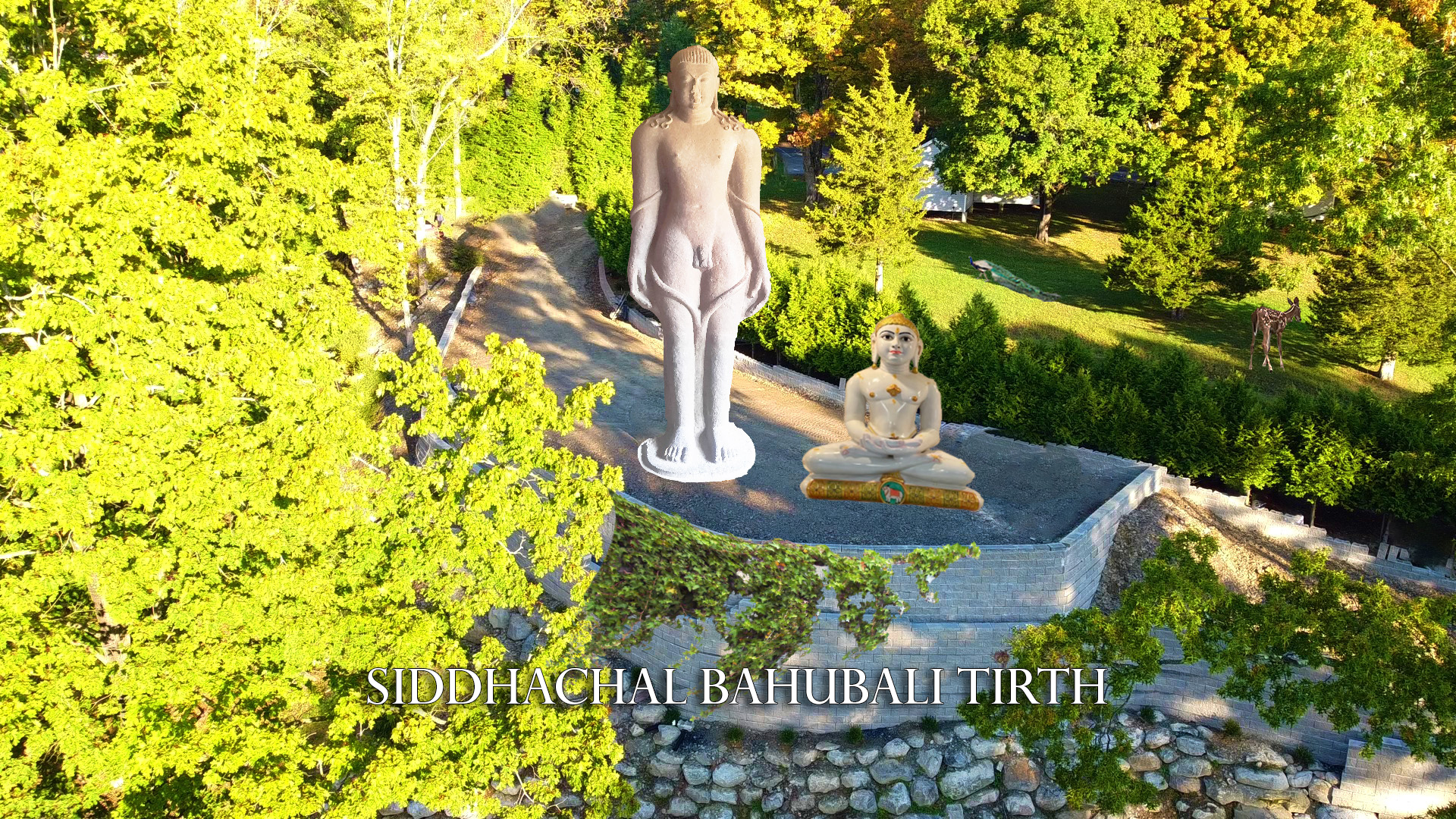Maps and Plans, 2009
Mapping Shikharji
When Siddhachalam embarked on the project to replicate the Tonks of Shikharji, it was confronted with a problem: it did not find, either in the public space, or with the relevant organizations at Shikharji, a reliable map of the Tonks atop Parasnath Hills. All maps it obtained were artistic or gross approximations. Google Earth was the nearest map it could find. However, Parasnath Hills had several unmarked charan-kamals that were not in the nature of Tonks but could be identified on Google Earth as structures. Moreover, there was no uniform numbering system of the Tonks at the Internet. As a result, the map obtained on the Internet could not be relied upon completely.
In June 2009 Siddhachalam commissioned Maps of India to create an accurate map of the Tonks atop Parasnath Hills. Combined with a field visit by the family of one of our volunteers, Vivek Jain, Siddhachalam helped create an authentic map of the Tonks. It also helped make corrections to how the Tonks were numbered and identified on the Internet. The resulting map has been placed on the Internet and copies made available to Jain organizations at Shikharji.
Layout of Siddhachalam
The final map was triangulated with the map of Siddhachalam. If the map of Shikharji is scaled down to one-third, and the entrance to the top of Parasnath Hill (which is facing north) is aligned with the north entrance of Siddhachalam (from 111 Hope Road), Jal Mandir of Shikharji sits atop the natural Spring House by the Sthanak at Siddhachalam and almost all Tonks of Shikharji can be spread across Siddhachalam.
This discovery confirmed that which had merely been an article of faith for Jaipat Singh Jain, the then president of Siddhachalam: that the layout of Siddhachalam mirrors the layout of the Tonks atop Parasnath Hills. A comparative map is available here.
Deepawali 2009
by Jaipat Singh Jain
Jai Jinendra.
A transcript of a lecture given by Guruji that is available at the front desk when one visits Siddhachalam is entitled “When I was Fourteen or Fifteen.” In it, Guruji reminiscences the virtual conversation he once had with Roopchandji Maharaj in the course of his morning meditation. Guruji considered Roopchandji Maharaj his inspiration. Guruji writes that Roopchandji Maharaj asked Guruji what he thought his purpose in life was. Guruji recalls having said that it was two-fold: to be a perfect yogi, and to build many temples.
Guruji was a perfect yogi. And Siddhachalam, he said, was the place he saw in his vision when he was a child.
Siddhachalam is also the place where he mastered the secrets behind the Namokaar Mantra and wrote the book “Song of the Soul” about the mantra. He gave this place the name Siddhachalam, that is, a mountain in homage to the siddhas. A homage to all souls who have achieved moksha. In due course, thanks to Guruji’s tyaag, tapasya and vision, Siddhachalam came to be called the world’s first tirth outside India.
Guruji often said that his vision was for Siddhachalam to have replicas of the great tirth’s of India.
And as it happens, the layout of Siddhachalam mirrors the layout of tirthraj Shri Sammed Shikharji’s 30 tonks and Jal Mandir.
Alongside this column is a map of Shikharji that Siddhachalam commissioned in early 2009. It was prepared by well-known cartographers, Maps of India.
Also alongside this column is a photo essay by Vivek Jain of each of the 30 tonks, Jal Mandir and Bhomiyaji’s temple. The map, layout and related details have been confirmed with satellite images, personal inspections and preliminary review of literature.
Collectively, they likely provide the most authentic map and presentation of Shikharji’s tonks that is available in public domain. In due course, Siddhachalam will add more materials to this Website so as to make available definitive information about Shri Shikharji tirthraj – the loftiest of all tirths.
If the map of Shri Shikharji is condensed to about a third in scale and then superimposed over the map of Siddhachalam by aligning the north entrance of Siddhachalam with the entrance of Shikharji, one finds that the Jal Mandir of Shikharji sits on the old spring house located at Siddhachalam. Furthermore, almost all of the 30 tonks of Shikharji get spread on our nature and meditation trails.



 Keshi said to Gautam: “Whom do you call foes?” Hearing these words of Keshi, Gautam replied: “O sage! The first foe is one’s unconquered soul. Add to this the four passions of anger, conceit, deceit and greed, and the five senses of touch, taste, smell, sight and hearing. Vanquishing all these ten, I move about righteously.” Kumar-shraman Keshi said: “Gautam, you are endowed with excellent wisdom. You have removed my doubt…” Uttaradhyayana Sutra, 23:3- 39. The conversation between Sharman Keshi, follower of Bhagwaan Parsvanath, and Gautam Swami, the ganadhara of Bhagwaan Mahavira.
Keshi said to Gautam: “Whom do you call foes?” Hearing these words of Keshi, Gautam replied: “O sage! The first foe is one’s unconquered soul. Add to this the four passions of anger, conceit, deceit and greed, and the five senses of touch, taste, smell, sight and hearing. Vanquishing all these ten, I move about righteously.” Kumar-shraman Keshi said: “Gautam, you are endowed with excellent wisdom. You have removed my doubt…” Uttaradhyayana Sutra, 23:3- 39. The conversation between Sharman Keshi, follower of Bhagwaan Parsvanath, and Gautam Swami, the ganadhara of Bhagwaan Mahavira.